While the dolmuş is an excellent way to get from point A to B, we decided a rental car would give us the greatest flexibility and freedom to see the local sights around Fethiye at our own pace. So after a few days of relaxing and clothes washing, (yay we have a washing machine!) Dave headed into town and got a good deal on a small Renault at 45 lira p/day ($25 ). This is excellent value as Turkey is not renowned for cheap car hire and usual prices average around $45 p/day, but being off season we had room to negotiate. It is also worth noting here that Turkey has the highest fuel prices in the world due to high taxes and profit margins in the country, with prices around 4.8 – 5 Lira a litre or around $2.60 a litre! But even taking fuel cost into account, it is undoubtedly the best way to get around to all the sights, especially with kids in tow.
As mentioned in an earlier blog post Lycia is the southern peninsular region bounded by Fethiye to the west and across to Antalya in the east. There were six principle cities of ancient Lycia with the settlements situated either along the coastal strip or on the slopes and hills of the mountain ranges, often difficult to access – a natural defensive feature. Over the coming days we would visit four of them as we cruised the countryside and coast.
Day 1. Our first stop though, is the famous Olu Deniz less than 10km away over a mountain.
This picture perfect beach and lagoon is on all the Turkish travel posters and is packed with foreign tourists during the summer months. On the morning of our visit, we have the beach completely to ourselves (apart from one umbrella attendant), which to us was totally amazing as the weather was just wonderful, apart from the water being just a little too chilly to jump in.
It was here that Phoebe exclaimed “Turkey is awesome, can we live here?” This echoed our sentiments exactly. As a family who loves the ocean (and exploring), it is hard to imagine a place that offers more variety than Turkey. It is surrounded by four seas and several straits and contains more Greek and Roman ruins than Greece and Italy. You can’t take a walk without stepping on ancient stories and history. This is ancient history personified, with just about everyone who has featured in history books living here on its shores – Phoenicians, Egyptians, Carthaginians, Greeks, Lycians, Arabs, Persians, Romans, Byzantines, Seljukes, Ottomans and many other Europeans during the Renaissance. Wow.
Next we visit Kayakoy village, a UNESCO World Heritage site and former Greek town that was abandoned in 1923 after the exchange of population* and is now a ghost town of some 400 derelict houses. Quite an eerie place as again we are the only tourists walking among the ruins for most of our visit. The highlight for the girls was a puppy that started following us and they became instant playmates as we wander around the rubble.
*When Turkey was proclaimed as a republic in 1923, as part of the peace settlement Greece and Turkey agreed to exchange their ethnic population. Around 1.25 million Greeks returned to Greece and 450 000 Muslims were repatriated to Turkey.
Being off-season many of the regular touristy roadside cafés are closed for the winter but as we drive slowly by looking for somewhere to eat, an elderly Turkish man waves his arms motioning that they are indeed open. We pull in and enjoy a half a dozen Gözlemes, the savoury, traditional Turkish hand-rolled pastry or pancake, filled with potato, meat or vegies. We watch as the fresh pastry is rolled out, filled and sealed, then cooked over a griddle.
Venturing further afield, we take the winding coast road past Olu Deniz as far as we can. The road snakes its way along the cliffs, sometimes with no guard rail and a shear drop to the breathtakingly crystal clear turquoise water below.
Day 2. The following day we go inland, first to the ancient Lycian city of Pinara. The city was built at the foot of a volcanic plug which is now honeycombed with tombs. Its vast, beautiful ruins confirm it was one of the most important and largest cities of Lycia.
The ticket hut is closed for the season, but with no fences or gates around any of these areas it remains open for the locals to come and go. For a brief time there are a few men harvesting the olive trees growing amongst the ruins, and we watch as they shake the trees catching the olives in a plastic sheet. Then as the only visitors, we take the time for some impromptu performances at the Roman amphitheatre, still in exceptional state with all the seats remaining.
This is also our first encounter with the Lycian sarcophagus. Immi is the first to notice and point out the inscriptions on the sides in Lycian characters, with Greek also appearing on some too. The innumerable rock tombs still have evidence of the fine and rich sculptures.
We spend some time clambering in and amongst the wonderful stones and tombs and as we try to find a trail down from the hillside ruins we come across a little tortoise high up among the rocks, much to the delight of the kids. The undisturbed landscape of the ruins provides a sanctuary to the spur-thighed tortoise, also referred to as the Greek tortoise. How appropriate it seems to see a prehistoric creature ambling through the ruins of long-gone human civilizations….
Invariably the questions came from the girls about what they are doing here and how they can live so far away from the sea … and so another teachable moment about the differences between turtles (that we from Queensland are much more familiar with) and tortoises.
Back to the car, we go south to the coast, to Patara. It is another of the six principal cities of Lycia, and its important trading port located at the mouth of the Xanthos River. After paying our entry at the manned toll gate that gives access to the entire national park that incorporate the ruins and the beach, we head first to the beautiful 18km long Patara Beach for a bite to eat and a play.
The beach is almost deserted, bar an elderly couple reading and one other guy asleep on a sun lounge. After our lunch at the café, fronted by sandbags protecting it from the shifting sands, we create some forts/castles of our own in the sand. The girls venture further and further into the water, splashing and chasing the waves before eventually taking an impromptu swim in their clothes – 3 days out from the official start of winter and they are enjoying DIPS in the Mediterranean Sea!
Although we knew that we couldn’t be everywhere at the ideal time (India would have been way too hot if we had gone there any earlier) we comment how wonderful it would be if we could be here around September, after the big crowds of the summer but when the sea is still warm enough to enjoy. Thankfully they have a change of clothes in the car, but they almost turn blue on the walk back!
We stop to look at the ruins of Patara much of which still remains undiscovered and buried under the shifting sand dunes, including the famous Temple of Apollo. However, some very exciting excavations have been going on revealing many structures previously hidden.
Among them, liberated from the many hundreds of truckloads of sand, is the parliament building where the elected representatives of the Lycian League met. It wasn’t until the end of 2007 that all the sand had been cleared from the theatre and some other buildings, and the columns on the main street had been partially re-erected revealing masonry in remarkable condition.
Patara was also the birthplace of St. Nicholas (born c.260-280 AD), bishop of Myra and the future Santa Claus, so, being close to Christmas we took a drive through the town, looking for any reference to this fact, but they are not cashing in here and the town is deserted, only finding one little guesthouse called the St Nicholas Pension. It is, of course, not a predominately Christian country but Muslim and very laid-back Muslim one at that – a very comfortable and non-threatening country that, at least on the surface appears very tolerant, friendly and peace-loving and if it wasn’t for everyone holding a mobile phone the villages and village-people look the same as they have for centuries.
Turning toward home for the day we have just enough time to briefly stop at Xanthos, the capital city of the Lycian Federation and its greatest city for most of its history being the centre for culture and commerce. Finds here date back to the 8th century BC. It is dark as we join the highway for our drive back to Fethiye and discuss where we should head for our last day with the car.
We decide on the ruins of Tlos, an initial 90 minute drive away with another visit back to Olu Deniz at the end of the afternoon for the kids to play on the beach – also because we just can’t get enough of looking at that water!
Day 3. At Tlos the ticket hut is again closed for the season, but with no gates, we walk through and explore unimpeded. Lying on the east side of the Xanthos valley, Tlos is perched on a rocky outcrop sloping up from a plateau, but ends on the west, north and northeast in almost perpendicular cliffs. At the top of the hill sits the remains of an acropolis and a Lycian fortress. The view from the top is spectacular with amazing 360° views over the valley and the surrounding mountains with its many small villages and fields of pomegranate trees we had just driven through.
The current village of Yaka co-exists with Tlos overlooking the ruins on the opposite hill top and I couldn’t help but think how wonderful it would be to be able to look out one’s window across these amazing ruins dotted around the hillside.
Tlos was one of the oldest and largest settlements of Lycia and also one of the most powerful. It was subsequently inhabited by Romans, Byzantines and eventually Ottoman Turks, making it one of few Lycian cities to be continually inhabited up until the 19th century. A portion of the stage building still stands and its many highly-decorated carvings are scattered about, many featuring lions. David pretends he is immortalised and strips off his shirt (and nearly the rest, before we yell to stop) and jumps up on a pillar – now there is something you couldn’t do in the height of tourist season!
Tlos is still slowly giving up its secrets as archaeological digs progress. The small but interesting museum in Fethiye actually display several complete marble statues of Roman emperors that were only uncovered at Tlos last year!
The next morning, after three very full days, we returned our car (christened ‘Barry’ by Immi) and spend the day walking around the old town in and enjoy a fresh fish lunch at the famed Fethiye fish markets and once again go back to taking the dolmuş whenever we venture to the markets or town.
“Take a blind man to Lycia, and he’ll immediately know from the smell of the air exactly where he is. The acrid perfume of lavender, the pungent fragrance of wild mint and thyme, will tell him.”
Cevat Şakir “Fisherman of Halicarnassus”,
famous Turkish author

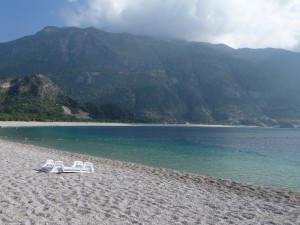
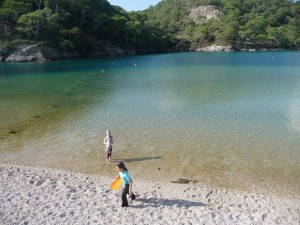
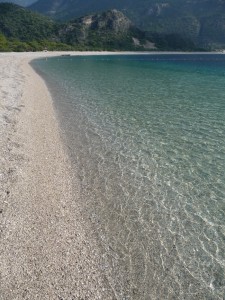
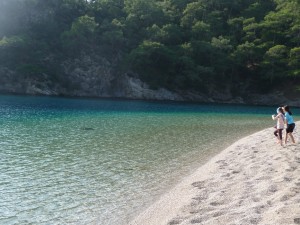
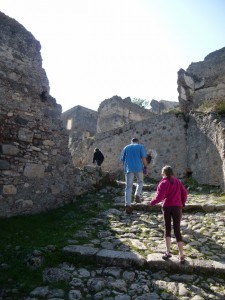
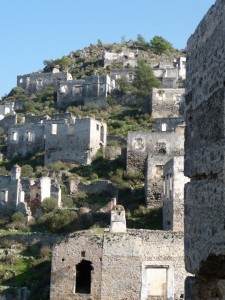
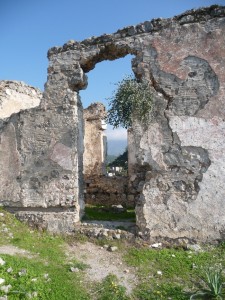
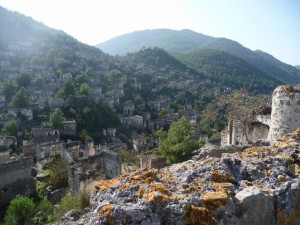
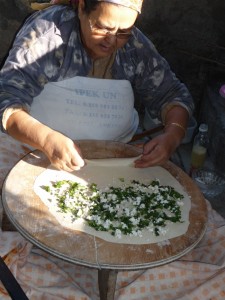
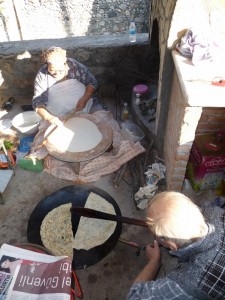
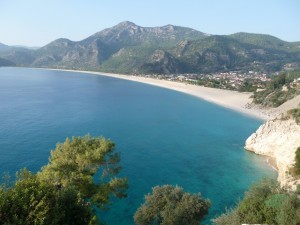
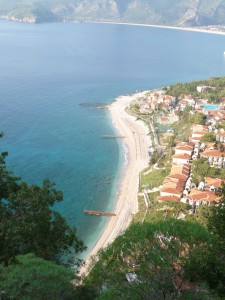
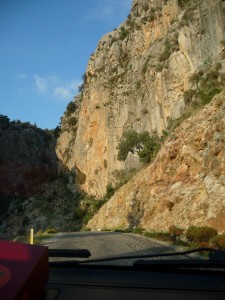
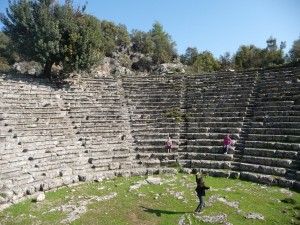
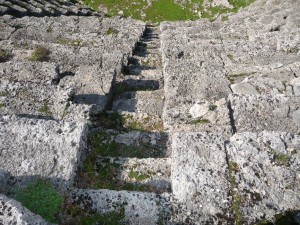
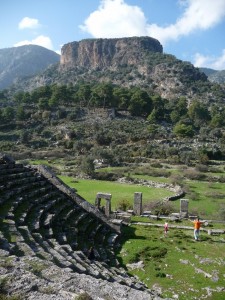
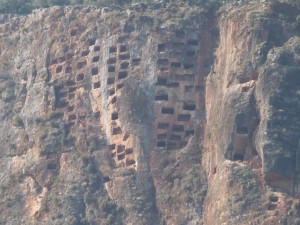
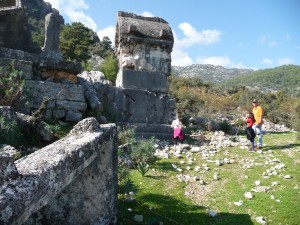
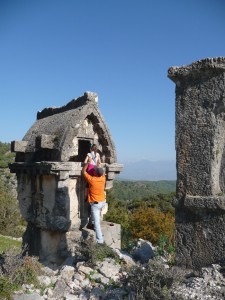
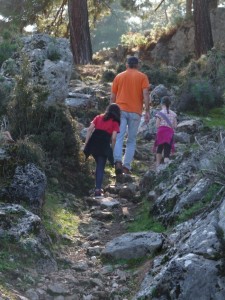
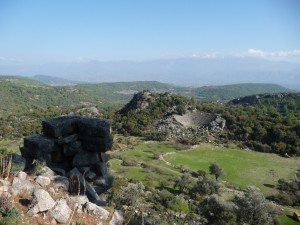
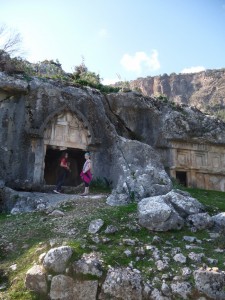
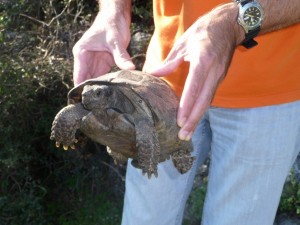
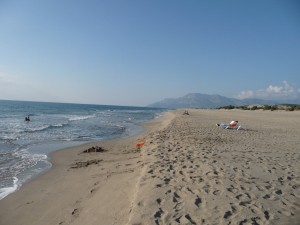
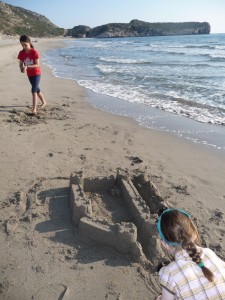
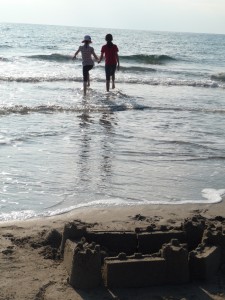
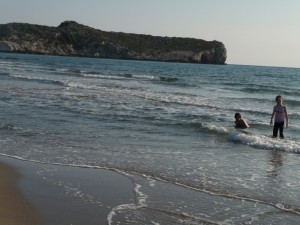
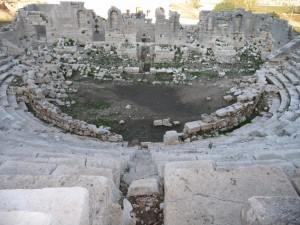
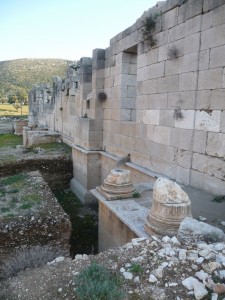
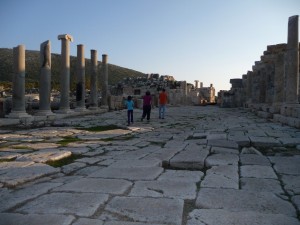
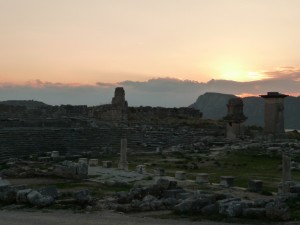
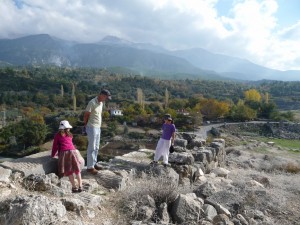
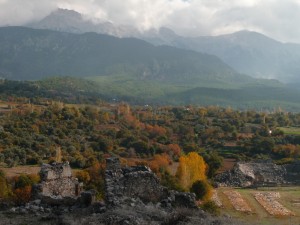
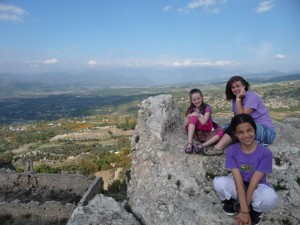
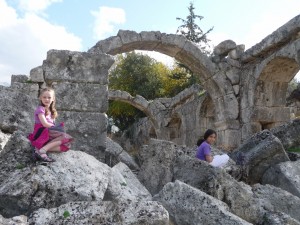
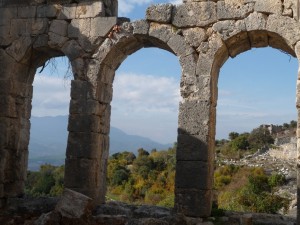
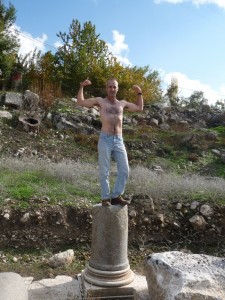
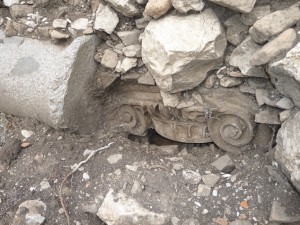
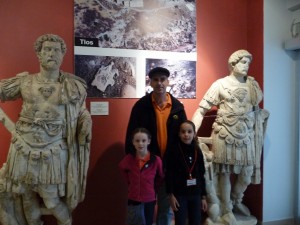
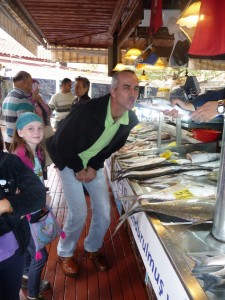
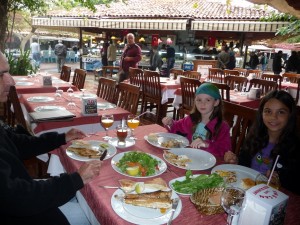

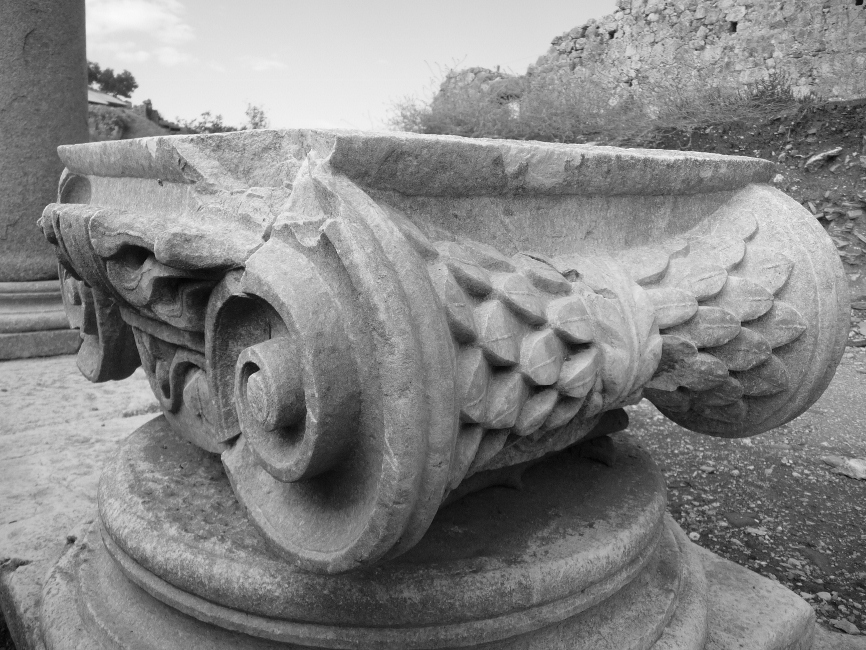
I would love for Dad to read your whole blog and I know he will pester Mum even more- ” Come on Vanda , lets go somewhere now ! ” he would say. Xoxo